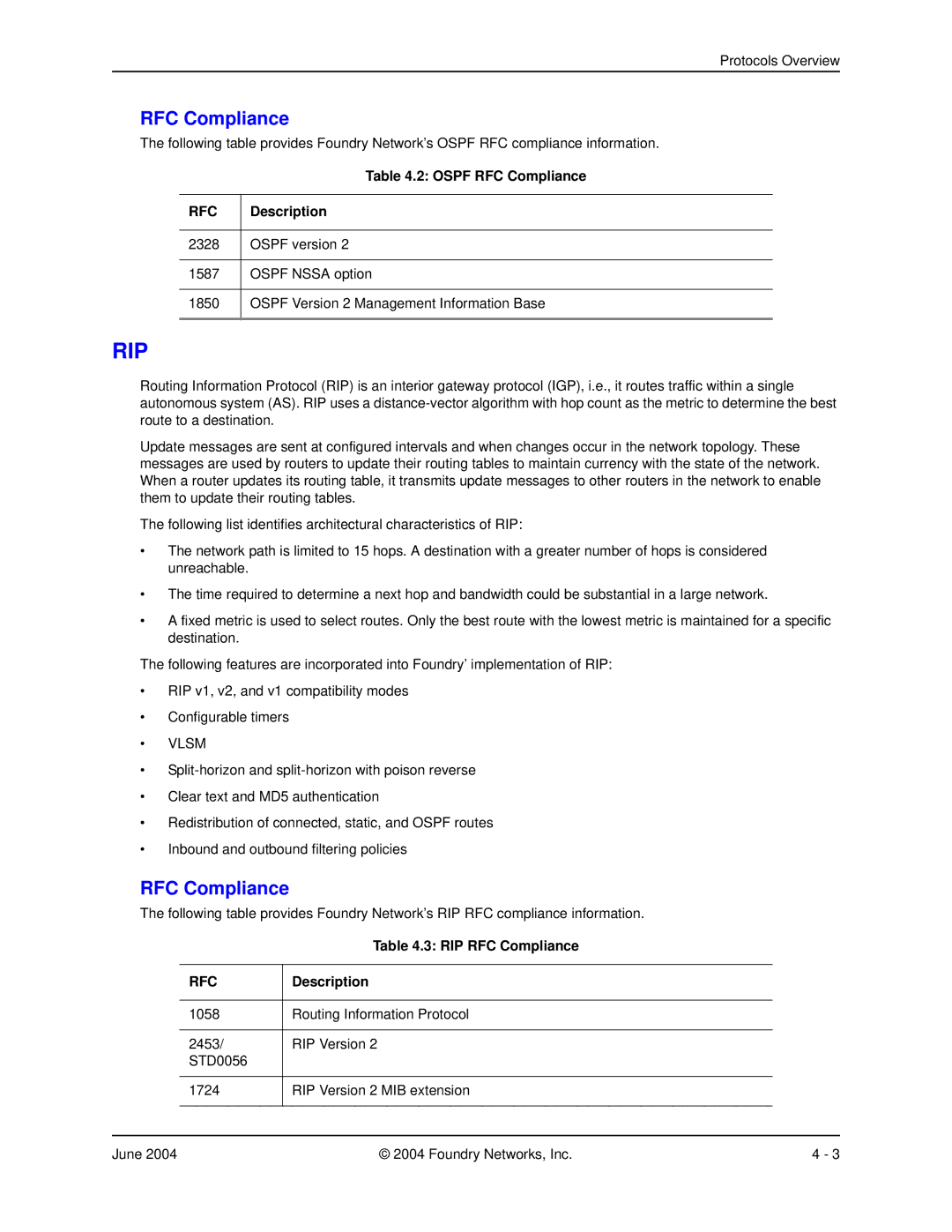
Protocols Overview
RFC Compliance
The following table provides Foundry Network’s OSPF RFC compliance information.
| Table 4.2: OSPF RFC Compliance |
|
|
RFC | Description |
|
|
2328 | OSPF version 2 |
|
|
1587 | OSPF NSSA option |
|
|
1850 | OSPF Version 2 Management Information Base |
|
|
RIP
Routing Information Protocol (RIP) is an interior gateway protocol (IGP), i.e., it routes traffic within a single autonomous system (AS). RIP uses a
Update messages are sent at configured intervals and when changes occur in the network topology. These messages are used by routers to update their routing tables to maintain currency with the state of the network. When a router updates its routing table, it transmits update messages to other routers in the network to enable them to update their routing tables.
The following list identifies architectural characteristics of RIP:
•The network path is limited to 15 hops. A destination with a greater number of hops is considered unreachable.
•The time required to determine a next hop and bandwidth could be substantial in a large network.
•A fixed metric is used to select routes. Only the best route with the lowest metric is maintained for a specific destination.
The following features are incorporated into Foundry’ implementation of RIP:
•RIP v1, v2, and v1 compatibility modes
•Configurable timers
•VLSM
•
•Clear text and MD5 authentication
•Redistribution of connected, static, and OSPF routes
•Inbound and outbound filtering policies
RFC Compliance
The following table provides Foundry Network’s RIP RFC compliance information.
| Table 4.3: RIP RFC Compliance |
|
|
RFC | Description |
|
|
1058 | Routing Information Protocol |
|
|
2453/ | RIP Version 2 |
STD0056 |
|
|
|
1724 | RIP Version 2 MIB extension |
|
|
June 2004 | © 2004 Foundry Networks, Inc. | 4 - 3 |
